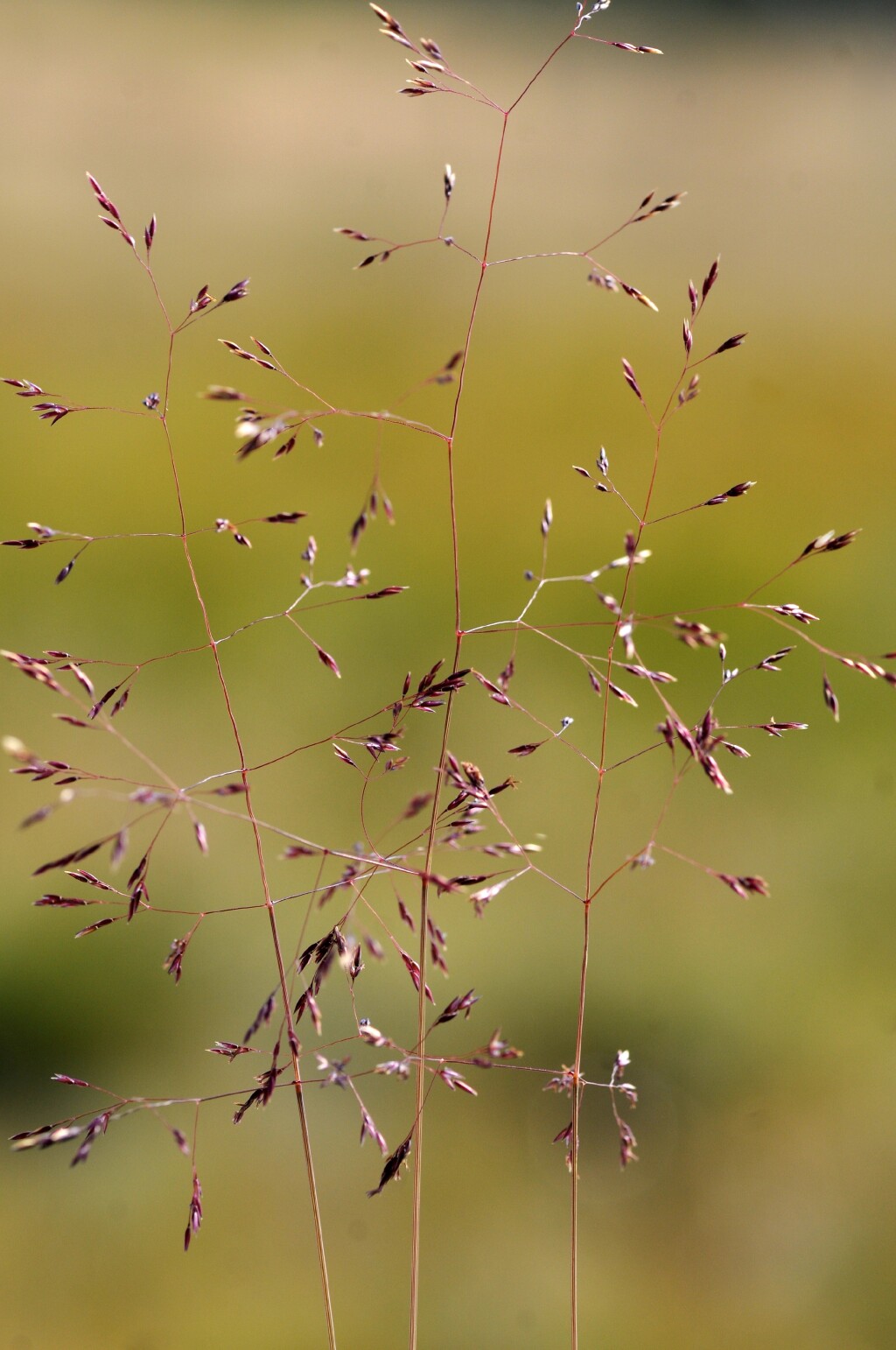Agrostis bettyae
S.W.L.JacobsSlender erect or ascending, loosely tufted, rarely shortly rhizomatous, annual or perennial. Culms to 90 cm high. Leaves basal, often sparse and/or rather few; ligule 2–5 mm long, shallowly to deeply laciniate; blade flat or becoming inrolled, to c. 15 cm long, 1.5–4 mm wide. Panicle mostly rather narrowly ovoid, 8–35 cm long, exserted from upper sheath; branches usually acutely inclined to rachis. Spikelets 2–2.5 mm long, usually distinctly purplish, mostly clustered toward tips of branches on pedicels 2–3 mm long; glumes subequal or the lower one very slightly longer; lemmas 1.5–2 mm long, truncate, awnless; palea minute; anthers 0.8–1.2 mm long. Flowers Jan.–Mar.
VVP, VRiv, GipP, OtP, CVU, GGr, DunT, NIS, EGL, EGU, HSF, HNF, MonT, VAlp. Also Qld, NSW, ACT, Tas. Moderately common in higher eastern parts of the alps (e.g. Nunniong Plateau, Cobberas, Mt Hotham) where often associated with wet heathy vegetation, scattered elsewhere through the Victorian highlands (e.g. Wellington Plain, Shelley, Tolmie, Dandenongs, Mt Macedon, Otways), with an isolated occurrence from Gorae in the far south-west. Also Qld, NSW, Tas.
Distinguished by the narrow panicle, dark purple spikelets (at least when young), and florets with relatively large anthers. Generally occurs at lower altitudes than the similarly large-anthered, usually purplish, but smaller A. muelleriana, however, the boundary between the two species is not always clear.
 Spinning
Spinning

